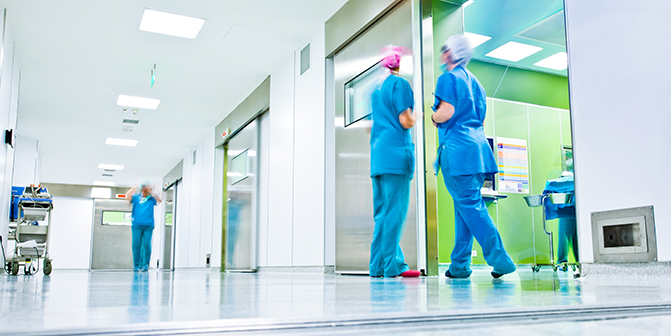Are Hospitals Ready to Handle Energy Costs?
Let's Save Energy
Alliance to Save Energy's Blog

While technological advancements in hospitals and medical clinics have resulted in better patient care, they have also resulted in higher energy output and costs. By their very nature, medical facilities tend to consume much more energy than other public buildings: they are occupied by hundreds or even thousands of occupants and employees each day, are in use 24 hours a day, and house energy-intensive activities. According to the U.S. Energy Information Administration (EIA), hospitals encompass a mere 2 percent of commercial floor space but use around 4.2 percent of commercial energy. In other words, there is room for significant improvement.
To examine where that energy was going, the U.S. Department of Energy (DOE) studied two hospitals in the Northeast and found that lighting consistently made up one of the highest categories of usage for these facilities. At first blush, it may seem that this situation could be easily remedied by lighting and signage retrofits – an area where technological advances have made energy-efficient options increasingly available. However, in hospitals, this may not be enough to significantly reduce consumption.
Lighting Control
Back in 2012, EIA produced a report of hospital energy use, finding that most facilities studied had already invested in energy-efficient technologies like compact fluorescent lamps (CFLs) or LED lighting.
Going a step further, it seems that a major opportunity for medical facility energy efficiency may lie in delamping (removing unnecessary light fixtures) or dimming areas that are over-illuminated. Many hospital rooms are more heavily lit than necessary. Possible improvements include leaving storage closets dark until they are needed and installing eye-level task lighting in examination rooms that can be switched on when necessary. Along those lines, DOE also recommends installing dimmers that will allow attendants to darken patient rooms in the evening. While all simple fixes, these facility strategies could have significant impacts if implemented.
Using Less, Doing More
Concern for the environment is not the only reason to save energy – it’s also good for business. Hospitals have the opportunity to increase their energy productivity, or the relationship between economic output and energy consumed. In other words, hospitals have the opportunity to get more economic output using less energy.
Delamping and effective lighting controls help hospitals manage energy use—which ultimately translates to greater energy productivity. For instance, one case study from Independence LED revealed that Jefferson University Hospitals in Philadelphia was able to increase its energy productivity by a wide margin and save 38,544 kWh and $3,084 per year by implementing retrofits and reducing the number of fixtures in Jefferson University Hospitals from 100 to 50. With a total installation cost of $1,121, this project led to a net usage decrease of over 34 kWh for every dollar spent.
Opportunities in Solid State Lighting
A truly effective energy program shouldn’t just cover today’s upgrades but should look prepare a future lighting strategy as well. It won’t be long before solid state lighting (SSLs) have replaced fluorescents altogether as the premier lighting option for hospitals.
SSLs demonstrate huge potential in the medical field—it’s possible these highly-efficient lighting options may be able to integrate with circadian rhythms, for instance. DOE estimates that by 2030, there will be enough SSLs in use to decrease U.S. energy rates by 25 percent. They have already been put to use on a trial basis in the University of New Mexico Health Center.
With the uncertainty of energy costs in the coming decades, hospitals that are ahead of the curve on energy efficiency will have the opportunity to lower operating costs while reducing their carbon footprint. And with lower operating costs, hospitals will be able to do more of what they do best – serve patients.

Bryn Huntpalmer is a mother of two young children living in Austin, Texas where she currently works as an Editor for Modernize. In addition to regularly contributing to Home Remodeling and Design websites around the web, her writing can be found on Lifehacker and About.com.
STAY EMPOWERED
Help the Alliance advocate for policies to use energy more efficiently – supporting job creation, reduced emissions, and lower costs. Contact your member of Congress.
Energy efficiency is smart, nonpartisan, and practical. So are we. Our strength comes from an unparalleled group of Alliance Associates working collaboratively under the Alliance umbrella to pave the way for energy efficiency gains.
The power of efficiency is in your hands. Supporting the Alliance means supporting a vision for using energy more productively to achieve economic growth, a cleaner environment, and greater energy security, affordability, and reliability.



